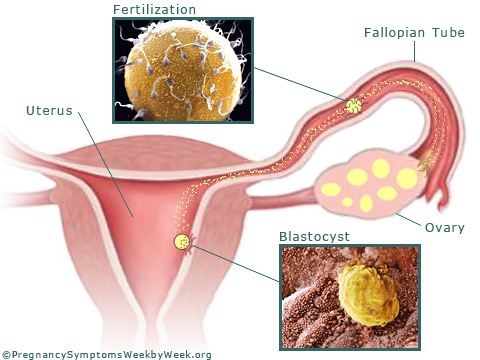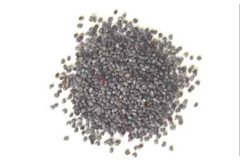3 Weeks Pregnant - Weekly Pregnancy Symptoms
The Fertilized Egg Implants in your Uterus During Week 3—
You Have Conceived!
265 DAYS TO GO. . .
COMMON PREGNANCY SYMPTOMS FOR WEEK 3
The miracle of life begins. The 23 chromosomes of your partner’s sperm, and the 23 chromosomes of your egg have combined to create the zygote, which forms when a fertilized egg starts its first few cell divisions. Fertilization is now complete, and your own hormones naturally stop your next menstrual cycle from occurring. The newly fertilized embryo triggers your pituitary gland to release hormones responsible for stopping your menstrual cycle.

WHAT'S GOING ON INSIDE?
Fertilization occurs once the sperm swim up the fallopian tube and meets the egg. The sperm carries genetic information and enzymes that help it penetrate into the egg.
The Blastocyst forms as the cells inside the egg rapidly divide. By the end of the week the blastocyst will reach the uterus where the outer lining of cells anchor to the uterine wall. The cell cluster inside the blastocyst creates the beginnings of the embryo.

Embryo Size
Your baby is about the size of a poppy seed during week 3.
LENGTH: 0.03 in / 0.08 cm
WEIGHT: 0.002 oz / 0.06 g
View Weekly Growth Chart >>
As cell divisions are occurring, the possibility of twins may cross your mind. Two separate eggs may have been released and fertilized, which results in fraternal twins. If one egg has been fertilized and splits into two embryos, then identical twins are formed. The timing of the split is crucial in the formation of the placentas and amniotic sacs. If the zygote splits in the first 3 days, then two placentas and two amniotic sacs develop within the uterus. If the split occurs 4-9 days prior to fertilization, or in the blastocyst stage, the babies will share a placenta but have separate amniotic sacs. If the split occurs after day 9, the babies will share a placenta and an amniotic sac.
<< Week 2 - PREVIOUS | Week 3 | NEXT - Week 4 >>

